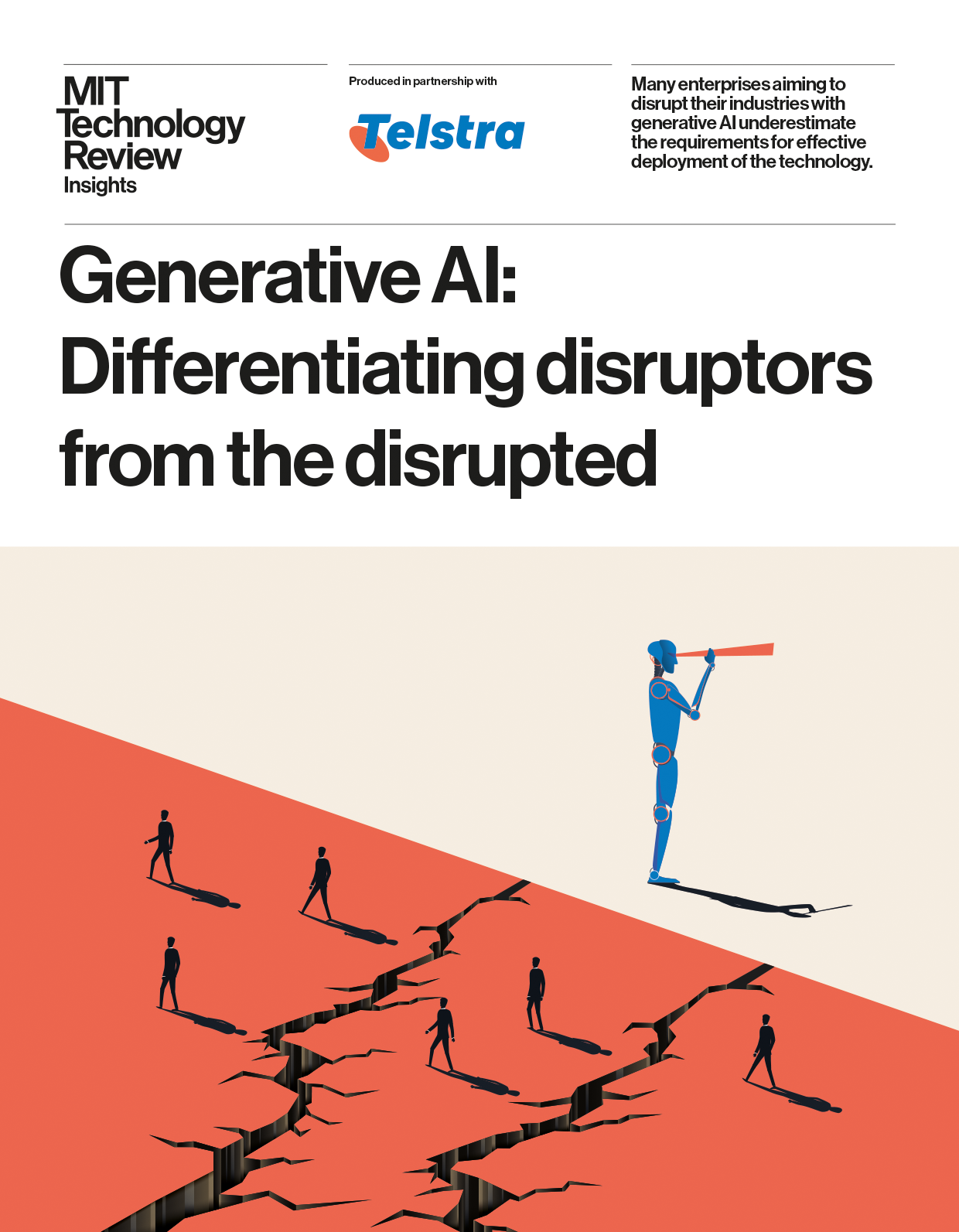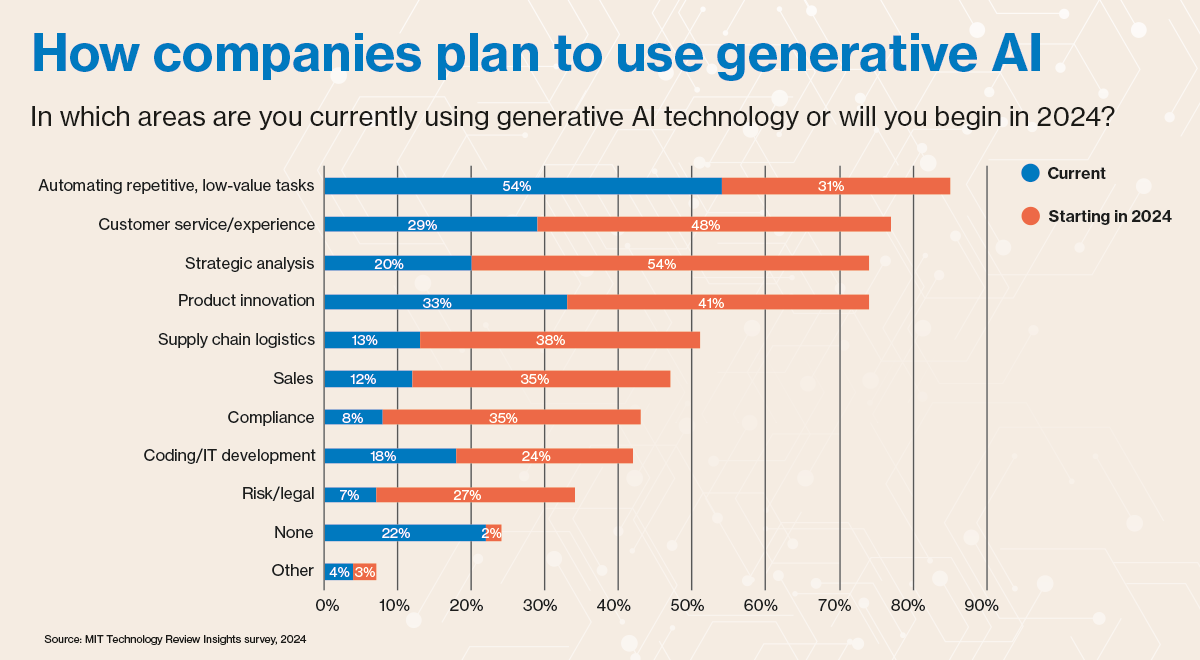Generative AI: Differentiating disruptors from the disrupted
Generative AI, though still an emergent technology, has been in the headlines since OpenAI's ChatGPT sparked a global frenzy in 2023. The technology has rapidly advanced far beyond its early, human-like capacity to enhance chat functions. It shows extensive promise across a range of use cases, including content creation, translation, image processing, and code writing. Generative AI has the potential not only to reshape key business operations, but also to shift the competitive landscape across most industries.

The technology has already started to affect various business functions, such as product innovation, supply chain logistics, and sales and customer experience. Companies are also beginning to see positive return on investment (ROI) from deployment of generative-AI powered platforms and tools.
DOWNLOAD THE REPORTWhile any assessment of the technology's likely business impact remains more forecast than empirical, it is necessary to look beyond the inevitable hype. To examine enterprises' technological and business needs for effective implementation of generative AI, 300 senior executives across a range of regions and industries were surveyed. Respondents were asked about the extent of their corporate rollouts, implementation plans, and the barriers to deployment. Combined with insights from an expert interview panel, this global survey sheds light on how companies may or may not be ready to tackle the challenges to effective adoption of generative AI.

The overarching message from this research is that plans among corporate leaders to disrupt competition using the new technology-rather than being disrupted--may founder on a host of challenges that many executives appear to underestimate.
Executives expect generative AI to disrupt industries across economies. Overall, six out of 10 respondents agree that generative AI technology will substantially disrupt our industry over the next five years." Respondents that foresee disruption exceed those that do not across every industry.
A majority of respondents do not envision AI disruption as a risk; instead, they hope to be disruptors. Rather than being concerned about risk, 78% see generative AI as a competitive opportunity. Just 8% regard it as a threat. Most respondents hope to be disruptors: 65% say their businesses are actively considering new and innovative ways to use generative AI to unlock hidden opportunities from our data."
Despite expectations of change, few companies went beyond experimentation with, or limited adoption of, generative AI in 2023. Although most (76%) companies surveyed had worked with generative AI in some way in 2023, few (9%) adopted the technology widely. Those that used the technology experimented with or deployed it in only one or a few limited areas.
Companies have ambitious plans to increase adoption in 2024. Respondents expect the number of functions where they aim to deploy generative AI to more than double in 2024. This will involve frequent application of the technology in customer experience, strategic analysis, and product innovation.
Companies need to address IT deficiencies, or risk falling short of their ambitions to deploy generative AI, leaving them open to disruption. Fewer than 30% of respondents rank each of eight IT attributes at their companies as conducive to rapid adoption of generative AI. Those with the most experience of deploying generative AI have less confidence in their IT than their peers.
Non-IT factors also undermine the successful use of generative AI. Survey respondents also report non-IT impediments to the extensive use of generative AI. These factors include regulatory risk, budgets, the competitive environment, culture, and skills.
Executives expect generative AI to provoke a wave of disruption. In many cases, however, their hopes to be on the right side of this innovation are endangered by impediments that their companies do not fully appreciate.
This content was produced by Insights, the custom content arm of MIT Technology Review. It was not written by MIT Technology Review's editorial staff.